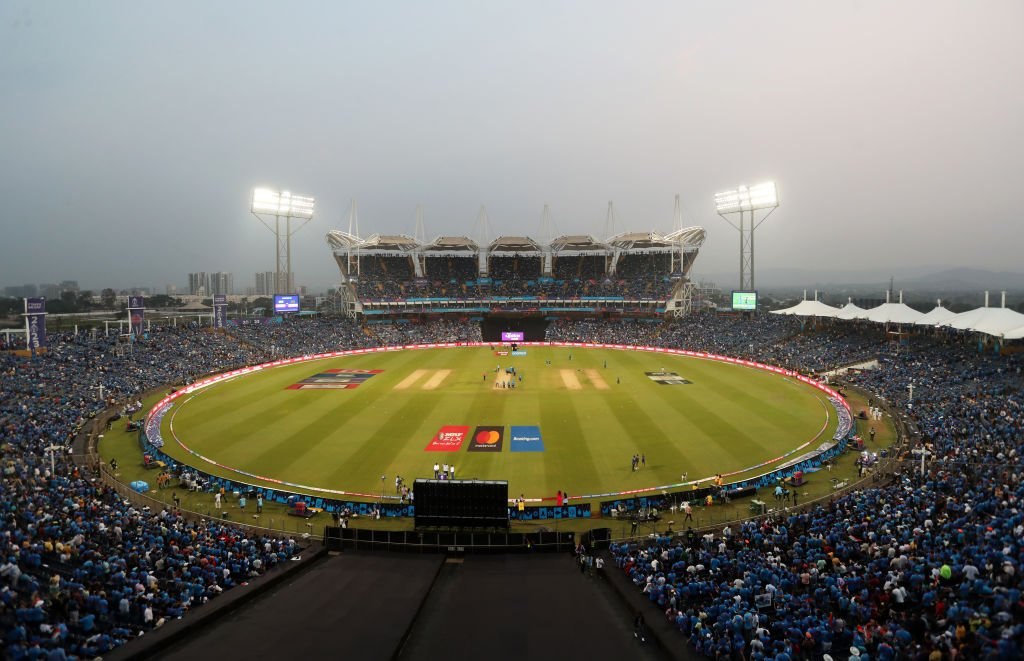
Is the middle-overs slump in ODI cricket a real thing?
With the increasing importance being attached to T20 cricket and its riches, ODI cricket finds itself in an existential crisis. Even during the recent ICC Cricket World Cup in India, there were murmurs of the demise of the format.
One of the most common arguments against the format is the supposed slump in interest during the middle overs of 50-over cricket, i.e., roughly overs 15-40 of each innings. But YouGov Sport’s dive into broadcast data from two major cricket markets – India and the UK – reveals that concerns about a decline in interest during the middle overs are either overstated if not outright faulty.
On Disney+ Hotstar, the platform which held online streaming rights for the tournament in India, average viewership for all World Cup games showed a gradual upwards trend throughout the course of the match, ignoring the massive dip at around the 270-minute mark, which is often when the 30-minute mid-innings break would occur. Average viewership at the 30-minute mark for all World Cup games stood at around 3 million before shooting up to 8 million at the 1-hour mark. For reference, in men’s ODIs, each hour of the ODI game usually sees around 13-16 overs bowled. Viewership from this point did decline, but only gently, until the 210-minute mark when viewership rises to 8.4 million before peaking for the first innings at 9.3 million at the 240-minute reading. Trends are similar during the second half of the game, only with more elevated numbers overall, peaking at 12 million at 480 minutes, which is around when most men’s ODI matches conclude.
Over in the UK, Sky Sports broadcast readings of England’s 2023 World Cup matches registered no slump or even a dip for that matter during the time period that usually contains the middle-overs. To make sure that this result wasn’t simply an effect of matches being broadcast earlier in the UK day due to timezone differences, we also look at patterns for the 2019 edition which was played in England itself.
The big deviation in the trend from the Disney+ Hotstar readings was the decline in viewership at the 450-minute mark. This could be perceived as an outcome of England’s poor showing at the tournament, where they lost six of their nine matches. The performances would most likely result in England supporters tuning out once the team’s chances in certain matches looked bleak. But a similar pattern was also noted in the successful 2019 edition, which probably indicates that UK viewers simply tune out when the results become evident – either in favour of their team or otherwise.
Back to the topic of a middle-overs slump, it would be reasonable to conclude that claims of the supposed decline in interest during this period of the contentious 50-over format are very overblown.
As Umang Poddar, Associate Director of YouGov Sport, puts it, “there's no one answer to the question, ‘Do people care less about middle overs?’ since patterns can be more nuanced across markets. But, going by the readings from two of cricket’s most important markets, it is more obvious than before that people do not mind sitting through the middle overs.”
For advertisers, the middle overs of ODI cricket could represent a chance to buy TV spots at a more cost-effective rate, in case perceptions of a middle-over slump lead to a reduction in prices then.
TV coverage insight is only a part of YouGov Sport’s comprehensive tracking capabilities, which also include sponsorship measurement and digital media tracking for an integrated understanding of the performance of both sporting events and the brands that align with these events.